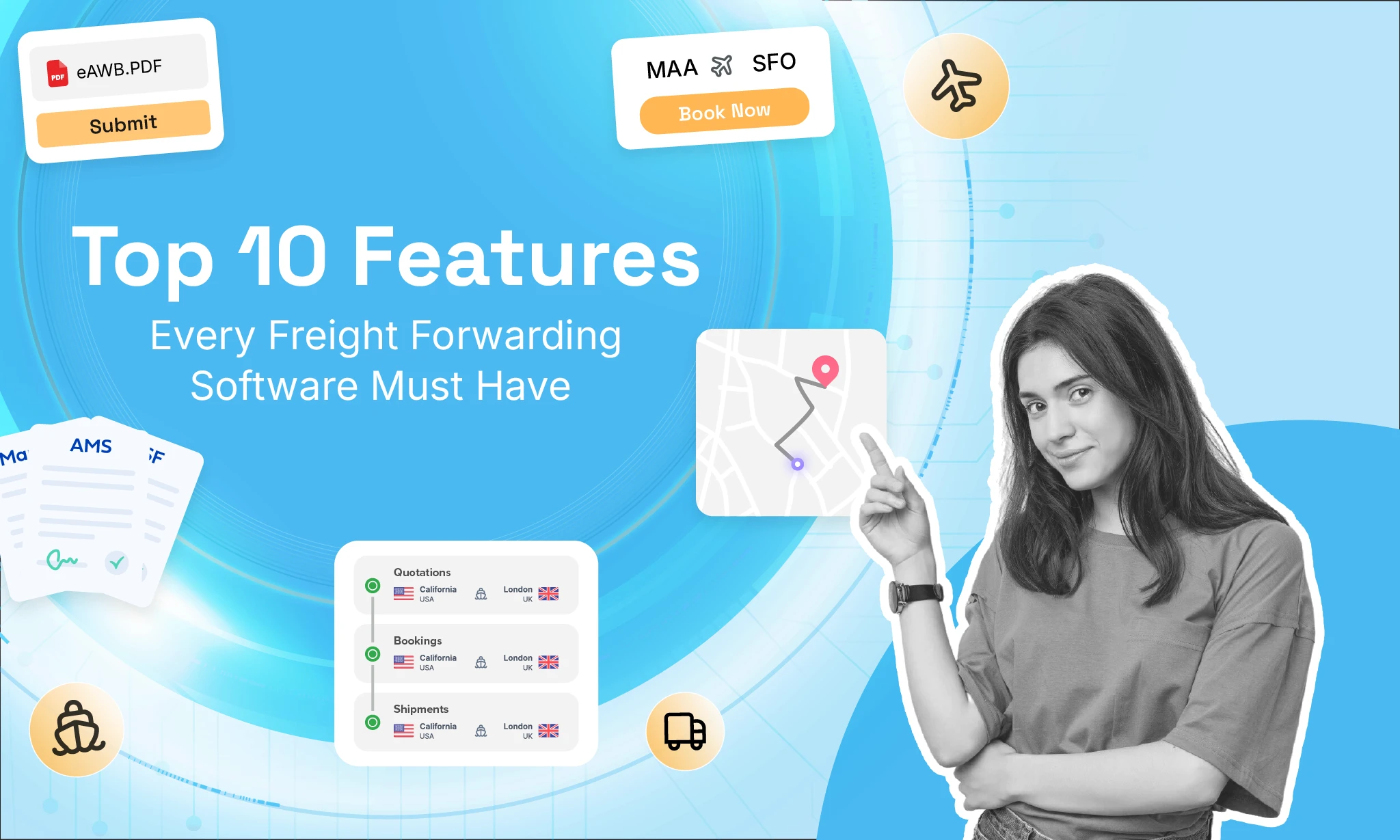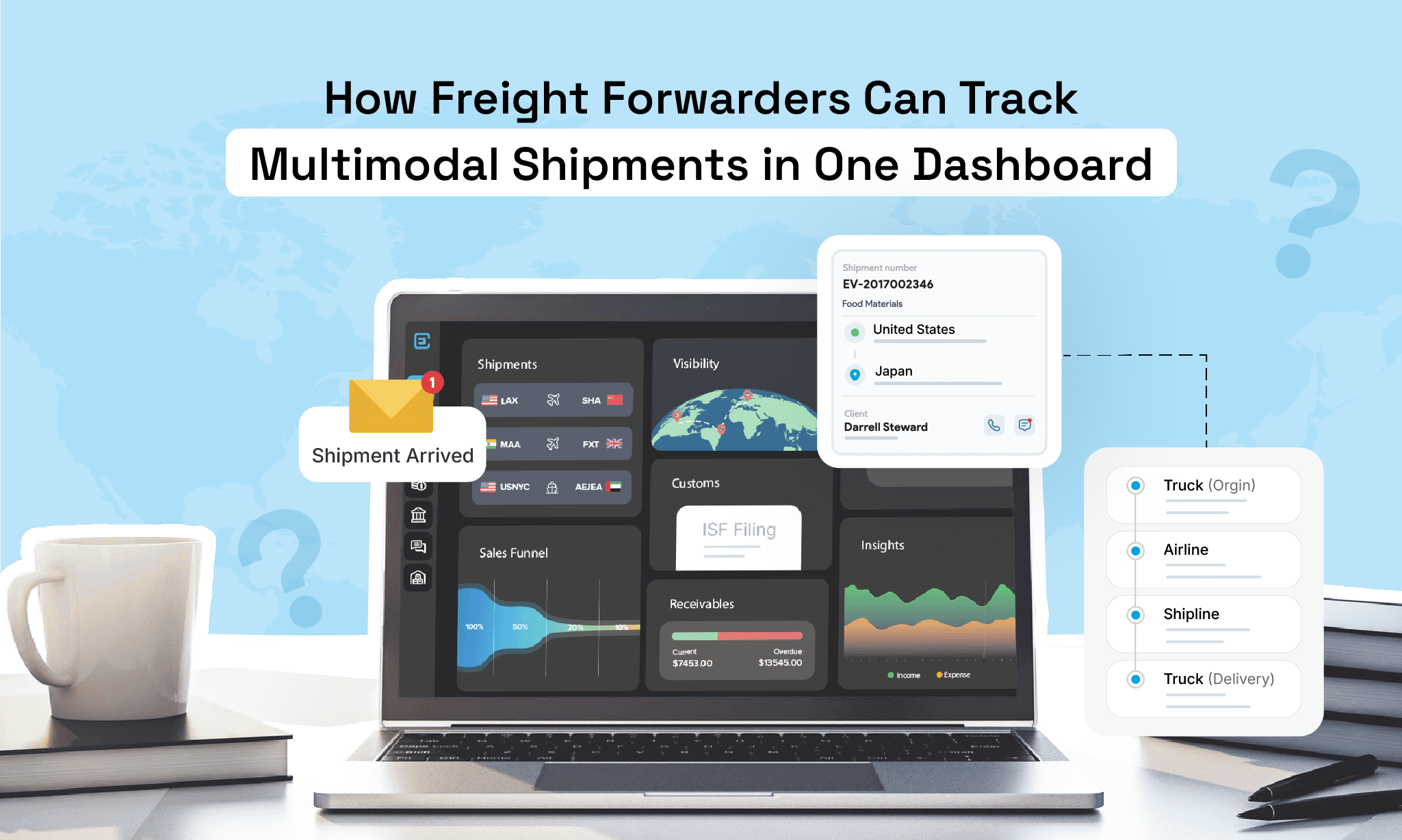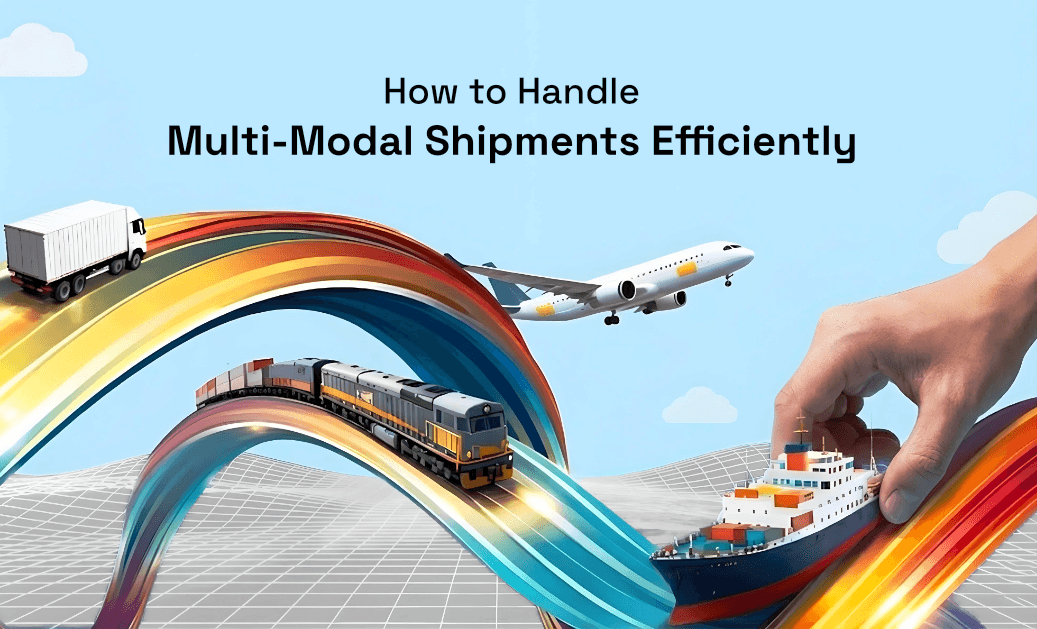Why Mobile Apps Are Essential for Freight Management in 2025
Author:
Dharshini Balamurugan
Published On:
Jul 29, 2025
Updated On:
Jul 29, 2025
1 min read
What’s the cost of being tied to a desk in 2025?
In a world where freight moves faster than ever, relying on outdated systems and scattered tools can mean missed updates, delayed shipments, and unhappy customers. Today’s logistics leaders aren’t chained to spreadsheets; they’re managing entire supply chains from their phones.
Mobile freight software and freight apps have shifted from being an advantage to being a necessity. They deliver real-time shipment visibility, seamless communication, and instant decision-making power, all from the palm of your hand.
In 2025, the ability to stay connected and act on the go isn’t just convenient; it’s the difference between falling behind and staying ahead.
Introduction
Freight management used to be a patchwork of phone calls, spreadsheets, and disconnected systems. Teams were often buried under piles of paperwork, resulting in delays, miscommunication, and frustrated customers. But with the advent of mobile apps, everything is now accessible in a single, unified interface right in your hand.
A freight app combines key logistics functions such as shipment tracking, document management, rate negotiation, and real-time updates into a seamless, mobile experience. This means freight forwarders no longer need to be tied to their desks or rely on outdated communication methods to keep operations running smoothly.
The Shift Towards Mobile in Freight Management

Mobile technology has disrupted nearly every industry, from banking to healthcare. Logistics is no exception. The shift towards mobile-first freight solutions has been driven by:
Customer expectations for real-time updates similar to e-commerce tracking.
Globalized supply chains that require 24/7 coordination.
Rising competition among forwarders to deliver faster and more reliably.
A growing workforce that demands flexibility and remote tools.
The pandemic also accelerated this digital shift, pushing freight companies to adopt mobile solutions that allow teams to collaborate and manage shipments without being physically present.
Why Mobile Freight Apps Are Game-Changers in 2025
1. Real-Time Visibility for All Shipments
In the fast-paced logistics environment, delays can cost thousands of dollars. A freight management app ensures that everyone from shippers to forwarders has real-time visibility of shipments, complete with ETA updates and instant alerts.
2. Control and Flexibility on the Go
No one wants to be chained to an office computer. Mobile freight software gives managers and teams full control over operations, even while traveling, enabling them to take decisive actions on the fly.
3. Enhanced Collaboration Across Teams
A mobile app connects drivers, warehouses, carriers, and managers in one ecosystem. This reduces the communication gaps that used to plague the industry.
4. Automation and Reduced Human Errors
From generating quotes to filing customs documents, mobile freight solutions automate repetitive tasks. This not only saves time but also minimizes costly errors.
Key Benefits of Mobile Freight Software
1. Boosted Operational Efficiency
With all critical tools consolidated into one app, teams can respond faster, manage rates efficiently, and avoid bottlenecks. Every minute saved translates into higher productivity and better service.
2. Seamless Document Management
Shipping involves mountains of paperwork, but with mobile freight apps, you can upload, share, and access documents anytime. Features like scanning and digital storage eliminate the need for physical files.
3. Improved Customer Satisfaction
Today’s customers expect transparency. A freight app allows them to track shipments, receive automated updates, and communicate directly, building trust and long-term relationships.
4. Lower Costs
By optimizing routes, automating workflows, and minimizing errors, mobile apps significantly cut down operational costs, giving forwarders a competitive edge.
5. Analytics and Insights
Most mobile freight solutions now offer data dashboards where forwarders can analyze performance metrics, evaluate carrier efficiency, and make informed decisions based on real-time data.
Must-Have Features in a Freight Management App
Managing freight today isn’t just about moving cargo; it’s about moving smarter, faster, and with total visibility.
Whether you're scaling operations or just trying to get out of spreadsheet chaos, the right freight app can change everything.
When evaluating a freight app for your business, look for these must-have features:
Real-Time Tracking: Accurate GPS-based updates for every shipment.
Automated Notifications: Instant alerts for delays, exceptions, and ETAs.
Document Uploads: Mobile scanning and quick sharing of customs forms or invoices.
Integrated Rate Management: Quoting, comparing rates, and managing contracts on the go.
Customer Portal: A self-service interface for clients to track and download documents.
KPI Dashboard: Metrics on delivery times, route optimization, and carrier performance.
Seamless Integrations: APIs that connect with your TMS, CRM, or ERP systems.
Industry Trends Driving Mobile Freight Solutions
1. Artificial Intelligence (AI) & Predictive Analytics
AI-powered freight apps are now predicting shipment delays, optimizing delivery routes, and automating repetitive decisions. For today’s world, this has become the norm for forward-thinking logistics firms.
2. IoT-Connected Devices
IoT sensors are integrated with freight apps to monitor cargo conditions (e.g., temperature, humidity), ensuring sensitive goods like pharmaceuticals or perishables are transported safely.
3. Blockchain for Document Security
Blockchain is gaining momentum in freight management apps for secure, tamper-proof documentation like bills of lading and contracts.
4. Green Logistics with Mobile Apps
Freight apps help reduce carbon footprints by optimizing empty miles, reducing fuel consumption, and tracking emissions, a growing requirement for eco-conscious companies.
How Mobile Freight Apps Empower Stakeholders
For Freight Forwarders
They can manage rates, monitor real-time KPIs, and communicate with clients seamlessly. This translates to faster response times and improved efficiency.
For Drivers
Drivers benefit from tools like route optimization, live instructions, and instant proof-of-delivery uploads, reducing delays.
For Clients
Clients can track shipments in real-time and receive automated updates, giving them peace of mind and improving trust.
What’s Next in the Future of Freight Management Apps?
1. Voice-Enabled Freight Commands
Voice assistants will soon enable logistics managers to check shipment statuses or create tasks hands-free.
2. Predictive Maintenance for Fleets
Apps will predict vehicle issues before they occur, reducing downtime and improving fleet reliability.
3. Hyper-Personalization
Expect dashboards tailored to individual user preferences, with AI-powered recommendations on cost-saving strategies and optimized routes.
4. Advanced Automation
From instant customs clearance to AI-led load optimization, the next wave of mobile apps will take automation to new heights.
For forwarders seeking clarity, speed, and control in 2025, CargoEZ stands out as a cutting-edge freight management platform with a powerful mobile app. It offers:
Real-time tracking and alerts for complete visibility.
Automated workflows to save time and reduce errors.
Seamless document handling and customs filing from your phone.
An intuitive mobile interface designed for logistics teams on the go.
With CargoEZ, you get more than just another dashboard, you gain a freight operating system designed to simplify complex supply chains and empower your team wherever they are. Digital freight forwarding is the way to go to survive in today’s world.
Final Thoughts
The logistics industry in 2025 is faster and more demanding than ever before. Mobile freight software is no longer a luxury; it’s a critical tool for success. Whether it’s tracking shipments, managing documents, or delivering exceptional customer experiences, freight apps bring clarity, control, and speed to every aspect of logistics.
If you haven’t embraced mobile freight solutions yet, now is the perfect time. The question isn’t just why you need them but how quickly you can implement them to stay ahead in this competitive, mobile-first world.
Frequently Asked Questions (FAQs)
1. What is mobile freight software?
Mobile freight software is an app-based platform that enables forwarders to manage shipments, track cargo, handle documents, and coordinate operations directly from their phones or tablets, offering flexibility and real-time control.
2. Why is a freight app important in 2025?
With global supply chains moving faster, a freight app ensures instant visibility, quick decision-making, and seamless communication—helping companies stay competitive in an increasingly digital logistics landscape.
3. What features should I look for in a freight management app?
Essential features include real-time tracking, automated notifications, document scanning and sharing, integrated rate management, analytics dashboards, and API connectivity with other logistics systems.
4. Are mobile freight apps only for large companies?
Not at all. Mobile freight apps are designed for businesses of all sizes. Smaller forwarders benefit from automation, fewer manual errors, and scalable solutions that don’t require heavy infrastructure.
5. How do mobile freight apps improve customer experience?
They keep customers informed through live shipment tracking, instant alerts, and easy communication channels, creating transparency and improving trust.
6. How does CargoEZ stand out?
CargoEZ offers a powerful mobile-first freight platform with features like real-time shipment tracking, customs filing, rate management, and document handling—all in a user-friendly, all-in-one solution.
7. Are freight apps secure?
Yes, leading freight apps like CargoEZ use advanced encryption, multi-factor authentication, and secure cloud storage to protect sensitive shipping and customer data.
Don't forget to share this blog!



